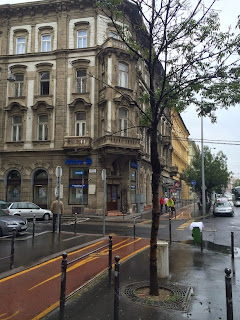Ensemble reforecasts (Hamill et el., 2013) are available at the NOAA ESRL site. The site also provides real-time forecast data and real-time products, the latter having been calibrated based on the historical performance of the reforecasts. Among their list of products is an option to generate plots for a user-selected point displaying time series of the ensemble forecast spread of precipitation and temperature. The precipitation time series for my favorite point (32N, 111W; Tucson) have been consistent over the past week or so. Out of eleven members of the ensemble only one or two have been generating small amounts for tomorrow, roughly in agreement with the latest short-term model guidance of 10% POP (slightly higher chance of thunder) for tomorrow and Wednesday. The ensemble spread product is currently showing the next chance of small amounts of precipitation starting around 28 June.
Off and on I have been exploring how well the reforecasts handle fluctuations in precipitable water (PW) in and around Arizona, focusing on a month-long period centered around [the traditional Tucson understanding of] the start of the monsoon. I have been using the model initial conditions as verification. The data displayed in the figure below are from the initial conditions for the grid cell (T254 = 0.47 degrees lat/lon) closest to Tucson.

The figure contains three horizontal dashed lines for reference. Besides the line highlighting one inch of PW, the other two lines are labeled with approximate late-afternoon surface dewpoints (with a typically dry mid-level cap). There are 29 years of initialized data (and reforecasts, not shown), 1985 through 2013. Of those 29 years, 7 of the years on the indicated day were drier than the 25th percentile, 3 of the years were more moist than the 90th [corr. 1 Jul, original 16 Jun read 10th] percentile, etc. There are some interesting things to notice about the analyzed distribution during this month-long period. At the beginning of the period, on 20 June, only about 10 percent of the years have PW over one inch, while by the end of the period, on 20 July, about 75 percent of the years have PW over one inch. Also, it would be a mistake to look at only the upward trend in the mean, without noticing that the spread of the distribution reaches a maximum around the 4th of July. This large spread results in part from the fact that the dry percentiles (brown) level off for about one week, from 28 June until 5 July. The leveling off in turn is a composite from: (1) a few years that become moist in late June, and stay that way into July; (2) a few years that stay dry into early July; and (3) most years, 18 out of 29, which have a double peak--moistening in late June, then more or less drying out for an extended period in early July. A particularly high-amplitude version of this double peak was in the year 2004, when PW peaked at over one inch on 24 June (putting that year in the top ten percent for 24 June). Then the year 2004 dipped to less than 15 cm from 29 June through 7 July. Anyway, the point about the upcoming transitional period is that the ensemble reforecasts have a difficult challenge to meet in representing climatology, let alone for the forecast in a particular year to convey a sense of which days may depart from climatology.



